A widespread belief persists that owning a luxury vehicle means you must always fill the tank with premium gasoline. As a result of this misconception, many luxury car owners choose premium fuel, regardless of whether their vehicle actually requires it.
In reality, numerous—if not the majority of—luxury vehicles are engineered to run just fine on regular gasoline. If your car isn’t designed to benefit from premium fuel, using it adds an unnecessary cost that brings no performance advantage, ultimately leading to wasted money.
However, that doesn’t mean all luxury cars can forgo premium gas. Many high-performance models are equipped with high-compression engines, which do require premium fuel. Regular gasoline, under the intense pressure and heat inside these engines, can become unstable and ignite prematurely.
This early combustion produces a noticeable sound commonly known as ‘pinging.’ Continued use of regular gas in such engines may eventually result in permanent damage, underscoring the importance of following manufacturer recommendations.
1. 2014 Volvo XC90
The 2014 Volvo XC90 is an upscale SUV powered by a 3.2-liter six-cylinder engine that produces 240 horsepower. Although the owner’s manual recommends using premium fuel, the vehicle operates just fine on regular gas. Premium fuel might offer a slight increase in power, but it’s not necessary for everyday driving.
A decade later, the XC90 had faded into relative obscurity, as the aging SUV was long overdue for a redesign. In the interim, the XC90 remained powered solely by a 3.2-liter inline-six engine producing 240 horsepower and 236 lb-ft of torque, mated to a six-speed automatic transmission.
The base 3.2 model came well-equipped, featuring 18-inch alloy wheels, fog lights, heated mirrors, headlight washers, rain-sensing windshield wipers, a sunroof, roof rails, rear parking sensors, and keyless entry.
On the inside, it included conveniences such as dual-zone automatic climate control, cruise control, leather upholstery, Bluetooth connectivity, and an eight-speaker sound system complete with a CD player, satellite radio, an auxiliary input, and an iPod/USB audio interface.
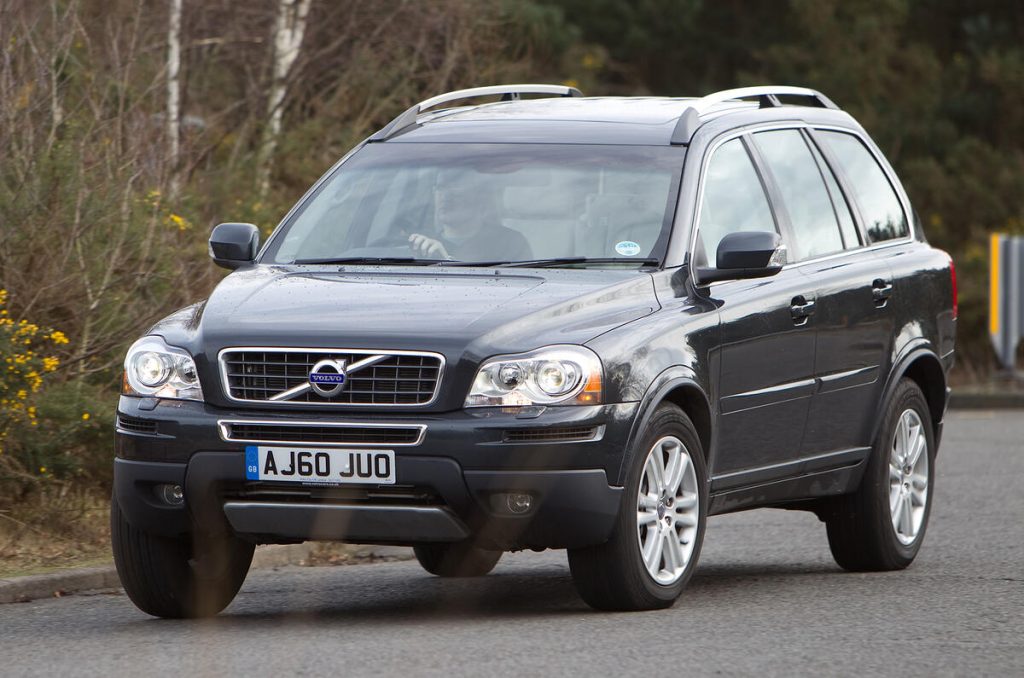
The 2014 Volvo XC90 R-Design added a sportier edge to the lineup, incorporating distinctive styling elements both inside and out. It came with 19-inch alloy wheels, adaptive HID headlights, a sport-tuned suspension and steering setup, and a self-leveling rear suspension.
The R-Design also featured exclusive leather upholstery, unique instrument gauges, and a sport steering wheel to emphasize its performance-oriented character.
Also Read: 10 Cars With Best Dash Designs That Bring Innovation
2. 2013 Infiniti M37
Similarly, the 2013 Infiniti M37 is a luxury sedan that comes with a suggestion for premium fuel use. However, performance remains consistent when regular gasoline is used, making premium an optional expense rather than a requirement.
The 2013 Infiniti M37 Sport remained parked in the driveway throughout a long stretch of cold, wet weather. A relentless winter storm soaked the Southern California coast for an entire week, making road conditions less than ideal for testing.
No photos were taken due to the car’s weather-beaten appearance, and finding dry pavement proved nearly impossible. Still, the moment I settled into the driver’s seat and shifted into gear, I knew this Infiniti was among the standout luxury sport sedans available that year.
Enough with the poetic prelude—let’s get into the specifics. The Infiniti M represents the brand’s flagship sedan, competing directly in the core of the luxury sedan segment. Buyers can choose from several variations, including the M35h, M37, M37x, M56, and M56x.
The M35h is a hybrid model combining gas and electric power. The M37 features a V-6 engine, while the M56 steps up to a V-8. Models without the “x” are rear-wheel drive, and those with the “x” badge come equipped with all-wheel drive.
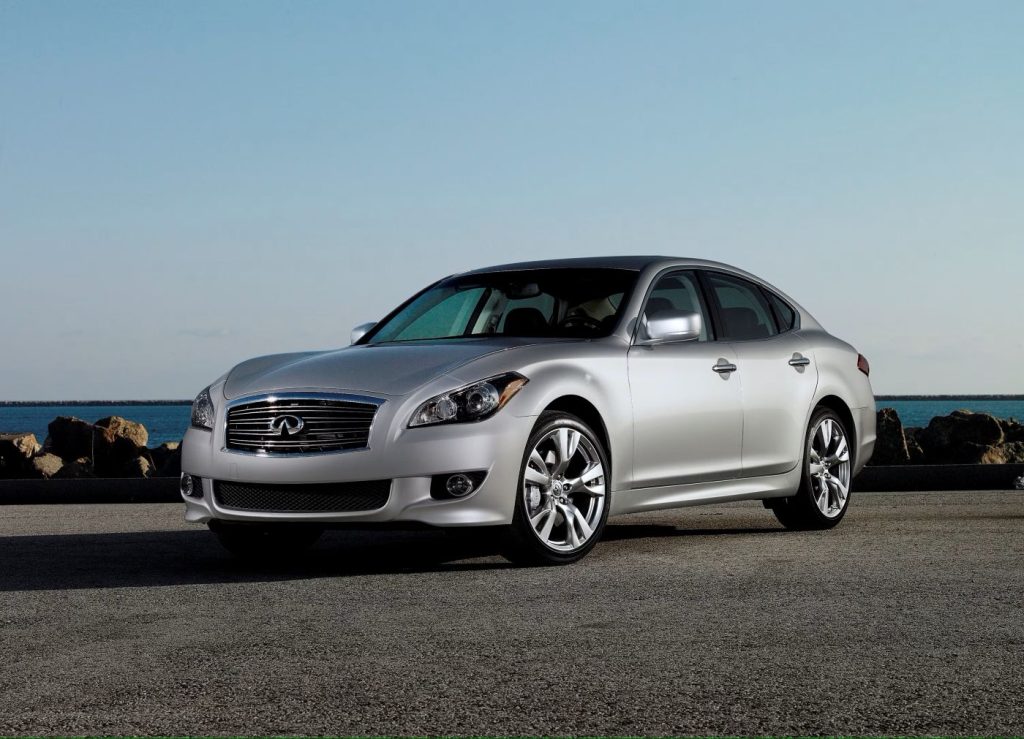
The 2013 Infiniti M37, priced at $49,095 including the $895 destination charge, comes standard with a solid list of luxury features. These include leather upholstery, Japanese Ash wood interior trim, dual-zone automatic climate control, Infiniti Intelligent Key with push-button start, Bluetooth connectivity, and a power sunroof.
Optional equipment is grouped into packages, all of which first require the Premium Package ($4,200). This package enhances the M37 with a navigation system, real-time traffic and weather updates, a Bose premium audio system, Infiniti Connection telematics, ventilated front seats, a heated steering wheel, and rear parking sensors. It’s rare to find an M37 without this upgrade.
After equipping the Premium Package, buyers can choose between two additional paths: the Deluxe Touring Package or the Sport Package—but not both.
The Deluxe Touring Package ($3,900) upgrades the cabin with semi-aniline premium leather, White Ash silver-powdered wood accents, a simulated suede headliner, refined materials and stitching, the Bose Studio Surround system, the Forest Air climate system, and a power rear sunshade.
On the other hand, the Sport Package ($3,750) includes 20-inch aluminum wheels with performance tires, a sport-tuned suspension, sport brakes, and on rear-drive models, 4-Wheel Active Steer.
It also adds front sport seats, magnesium paddle shifters, aluminum pedal trim, a sport-style steering wheel and shift knob, and unique front-end styling.
Buyers who choose the Sport Package can also opt for the Sport Touring Package ($2,000), which includes the Bose Studio Surround audio system, the Forest Air climate system, and a power rear window sunshade.
After selecting either the Deluxe Touring or Sport Package, buyers may add the Technology Package ($3,050), which brings a suite of advanced safety and driver assistance features.
These include Blind Spot Warning and Intervention, Lane Departure Warning and Prevention, Intelligent Cruise Control, Distance Control Assist, Intelligent Brake Assist, Forward Collision Warning, an Adaptive Front Lighting System, Front Pre-crash Seatbelts, an Eco Pedal, and Infiniti’s “active trace control” system.
Additionally, for those who choose the Deluxe Touring Package but still want the sporty appearance, Infiniti offers a Performance Tire & Wheel Package, adding the same 20-inch wheels and tires found in the Sport Package. This was the setup on the Moonlight White M37 I tested, bringing the total vehicle price to $61,845.
Beyond these factory packages, Infiniti also offers a selection of dealer-installed accessories to further personalize the M37.
3. 2014 Buick LaCrosse
The 2014 Buick LaCrosse offers two engine configurations—a 2.4-liter four-cylinder and a 3.6-liter V-6. Regardless of which engine is chosen, both options provide capable performance when powered by regular gas, allowing drivers to skip the premium pump without sacrificing driving quality.
For 2014, the Buick LaCrosse receives a subtle refresh in both exterior and interior styling, along with a series of advanced technological upgrades. These updates include features such as adaptive cruise control, lane change alerts, rear cross-traffic alerts, and a redesigned touchscreen interface.
While many car buyers gravitate toward midsize sedans, large sedans like the 2014 Buick LaCrosse deserve attention—especially for families seeking extra passenger room. Among full-size sedans, the LaCrosse stands out for its sleek exterior, upscale cabin design, and a ride that is both exceptionally smooth and quiet.
This model year brings updates to the LaCrosse’s front and rear styling, including a new hood, grille, lighting elements, trunk lid, and bumpers. Inside, the refreshed cabin remains elegant, now enhanced by sweeping lines, soft-touch surfaces, and generous LED accent lighting.
The center stack benefits from a simplified design and integrates Buick’s latest IntelliLink touchscreen interface. Safety enhancements for 2014 include new systems such as forward collision warning, lane departure warning, and rear cross-traffic alert.
Mechanically, not much has changed. The base model features the “eAssist” mild-hybrid powertrain—a combination of a 2.4-liter four-cylinder engine, an 11-kilowatt electric motor, and a lithium-ion battery pack.
While this setup can’t run on electricity alone, it enables the LaCrosse to achieve a commendable EPA-estimated fuel economy of 29 mpg combined. However, the trade-off is performance: this version can feel underpowered and a bit noisy. Despite that, it’s far more affordable than dedicated hybrids like the Lexus ES 300h.
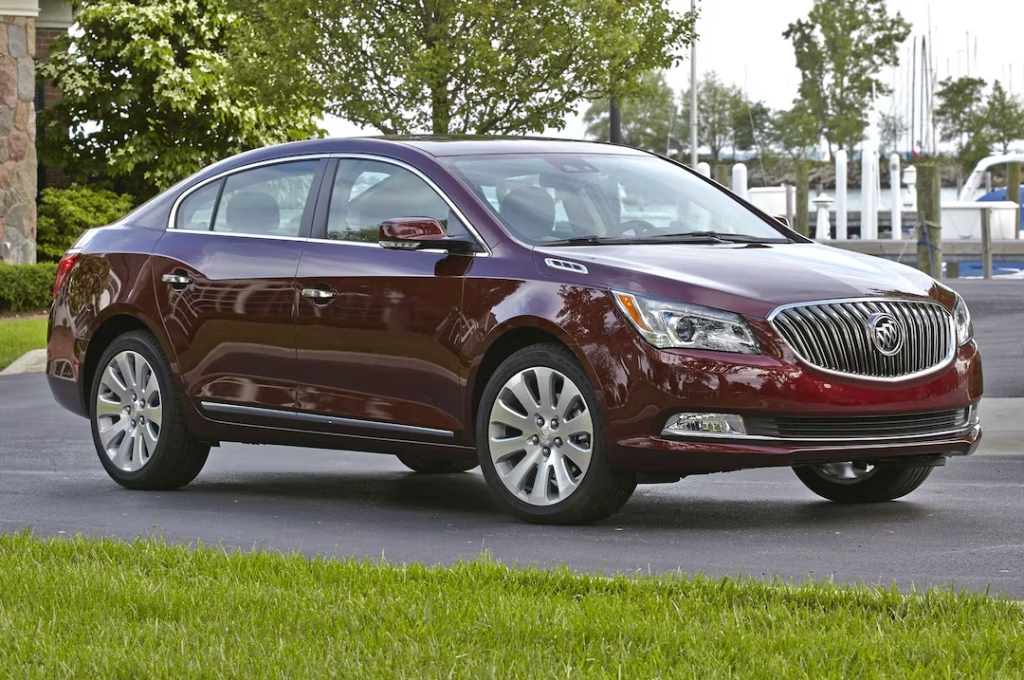
For drivers seeking more power, Buick offers a 3.6-liter V6 engine, which is optional on the base and Leather trim levels and standard on higher trims. This engine better aligns with the LaCrosse’s premium character and is available with all-wheel drive.
Potential buyers should be aware of a few drawbacks. The LaCrosse’s trunk is relatively small for a vehicle in this class, which could be a downside for families. Also, while the IntelliLink interface looks sophisticated, it can be slow to respond to user inputs.
Furthermore, the LaCrosse faces stiff competition in the segment, with alternatives like the Acura TL, Chrysler 300, Kia Cadenza, and Lexus ES 350 or ES 300h hybrid offering their own compelling mixes of space, style, and performance. Although the 2014 LaCrosse doesn’t significantly outshine any of its competitors, it remains a well-rounded and appealing option.
The 2014 Buick LaCrosse comes with two engine choices. The standard powertrain on the base and front-wheel-drive Leather trims is the mild-hybrid system, pairing a 2.4-liter four-cylinder engine with an 11-kilowatt electric motor and lithium-ion battery.
This setup generates a combined 182 horsepower and 172 lb-ft of torque, managed by a six-speed automatic transmission and front-wheel drive.
In Edmunds testing, a LaCrosse equipped with this powertrain accelerated from 0 to 60 mph in 9.2 seconds—a modest result for this class. Still, the emphasis here is clearly on efficiency rather than speed. Thanks in part to aerodynamic features like active grille shutters, this model achieves an EPA-estimated 29 mpg combined (25 city/36 highway).
The more powerful 3.6-liter V6 engine, which produces 303 horsepower and 264 lb-ft of torque, is available as an option on lower trims and standard on upper trims. It also comes with a six-speed automatic transmission, with front-wheel drive standard and all-wheel drive optional.
In testing, the front-wheel-drive V6 LaCrosse reached 60 mph in 6.8 seconds—an average performance for the segment. Fuel economy with this engine is rated at 21 mpg combined (18 city/28 highway) for front-wheel-drive models and 20 mpg combined (17 city/26 highway) with all-wheel drive.
Also Read: Top 10 Vehicles With Storage Bins That Are Great for First Aid Kits
4. 2013 Cadillac ATS
As noted by Auto1, the 2013 Cadillac ATS holds a prestigious spot in the American luxury lineup, which often leads owners to default to premium fuel. The ATS features a 2.5-liter four-cylinder and a 3.6-liter V-6, both of which run well on regular fuel. However, if buyers opt for the turbocharged engine variant, premium gas becomes a necessity due to its specific performance requirements.
The 2013 Cadillac ATS comes with a choice of three different engines and two transmissions. The standard engine is a 2.5-liter four-cylinder that generates 202 horsepower. For those seeking more robust performance, there’s an option to upgrade to a turbocharged 2.0-liter four-cylinder engine delivering 272 horsepower or a 3.6-liter V6 engine that produces 321 horsepower.
The six-speed manual transmission is exclusive to the turbocharged 2.0-liter engine, while a six-speed automatic transmission is standard with both the base four-cylinder and the V6, and is also available with the turbo engine.
According to EPA estimates, the base engine returns fuel economy of 22 mpg in the city and 33 mpg on the highway. When equipped with all-wheel drive and the 3.6-liter V6, the ATS averages 18 mpg city and 26 mpg highway.
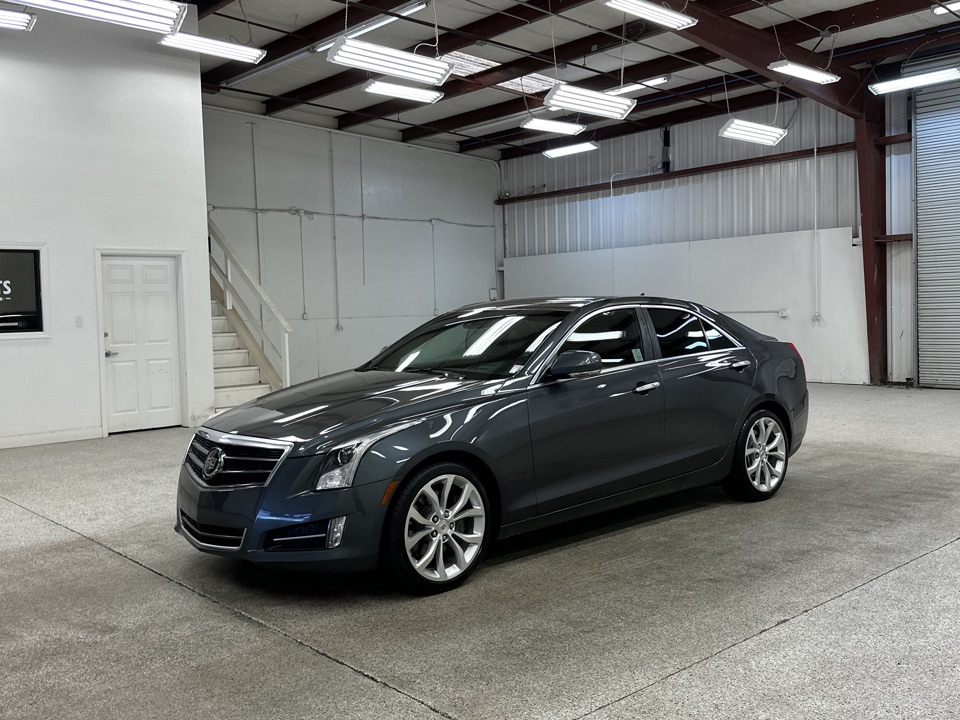
Among the available powertrains, automotive reviewers tend to favor the turbocharged and V6 engines over the base four-cylinder. They note that the base engine lacks the strength found in rival models, though it remains the most efficient option in terms of fuel economy.
The turbocharged and V6 engines not only offer more power but are also praised for enhancing the performance of both the manual and automatic transmissions. The manual gearbox, only available with the turbocharged engine, receives positive reviews for its smooth gear changes.
Critics also commend the automatic transmission for its responsiveness and quick shifts, particularly when paired with the V6 engine. However, some reviewers express disappointment that the manual transmission isn’t offered with the other engine configurations.
5. 2011 Hyundai Equus
Lastly, the 2011 Hyundai Equus marks Hyundai’s entry into the luxury market with high-end features and a refined cabin. Despite being powered by a 4.6-liter V-8 engine, the Equus delivers luxury-grade performance even on regular gasoline, making it a practical choice for those seeking premium comfort without the fuel premium.
Just two years ago, Hyundai made a bold move into the upscale market with the $40,000 Genesis. However, the lukewarm sales response to the semi-premium sedan indicated that the market might not yet be fully ready to embrace a high-priced vehicle from Korea.
Despite this, Hyundai took an even more ambitious leap in 2011 with the introduction of the $58,900 Equus (or $65,400 for the Ultimate trim). This price range ventures into territory where even long-established brands like Cadillac and Lincoln tread cautiously when it comes to cars.
The question is whether Hyundai’s full-size luxury sedan is competitive enough with existing high-end models—while being attractively priced—to convince buyers to look past the badge. Or is this move simply too ambitious and premature, destined to appeal only to a small niche?
While the Genesis is positioned to compete with the Mercedes E-Class, BMW 5 Series, and Lexus GS, the Equus sets its sights higher, targeting their full-size counterparts.
The relationship between these two Hyundai sedans resembles that between the BMW 5 and 7 Series, with the Equus sporting a wheelbase of 119.9 inches—about four inches longer—an overall length of 203.1 inches, which is seven inches longer, a width of 74.4 inches (one inch wider), and a nearly identical height of 58.7 inches.

Unlike BMW’s practice of stretching the same design for different size classes, the Equus avoids the “longer sausage” look. With elegant curves reminiscent of a Buick, and even a subtle sweep-spear, the Equus’ exterior carries more distinctive styling and seems less derivative of direct rivals than the Genesis.
However, as the executive vehicle of choice in its home market, it’s still more conservative than Hyundai’s own Sonata. There’s nothing about the design likely to alienate buyers, but there’s little to strongly excite them either.
Inside, the Equus lacks bold visual elements and instead presents a more conventional premium sedan layout. While the materials used meet expectations for this price class, they generally don’t surprise—unless the presence of extensive Alcantara suede on the headliner, high-grade leather on the seats and dashboard, and real wood trim in a Hyundai is unexpected.
The car comes impressively loaded with high-end standard features like adaptive cruise control, quad-zone climate control, power-reclining rear seats, a 608-watt 17-speaker Lexicon sound system, and an iPad that serves as the owner’s manual—a standout feature.
One clear strength is that the multitude of controls are more intuitive and user-friendly than those in many European rivals. In a touch reminiscent of higher-end Mercedes models, the seat adjustment controls are placed high on all four doors.
However, Hyundai appears to have overlooked some fundamental aspects in its rush to pack the Equus with upscale features.
The driver’s seat, which is set relatively high in relation to the dashboard—similar to the Lexus LS and Mercedes S-Class—offers good forward visibility through an upright windshield, which helps minimize the car’s perceived size.
But the seat design itself is lacking. The bolsters are widely spaced, and the seat lacks contour between them, offering no lateral support. While hardcore side bolstering isn’t necessary in a luxury cruiser like this, more enveloping seats would greatly enhance comfort even on relaxed highway drives.
Cars That Only Run on Premium Fuel
Some cars are specifically engineered to run only on premium fuel because they use high-compression engines, turbochargers, or superchargers that require higher-octane gas to perform correctly and avoid engine knocking.
Regular fuel in these vehicles can reduce performance, efficiency, and even cause long-term engine damage. Automakers explicitly state in the owner’s manual when premium fuel is required, not just recommended.
Here are 5 cars that require premium fuel to operate properly:
1. BMW M3 (2023)
The BMW M3 is powered by a turbocharged inline-six engine that produces 473 to 503 horsepower, depending on the trim. This high-performance engine is built for responsiveness and precision, and BMW mandates premium fuel to maintain its performance and avoid engine knock.
The 2025 BMW M3 stands out as a performance-oriented sedan with a rich pedigree, offering explosive acceleration, athletic handling, and a practical mix of back-seat space and trunk capacity.
It carries the legacy of its mid-1980s racing origins, combining impressive power and dynamic driving capabilities with everyday usability. While it’s ideal for driving enthusiasts, it might not appeal to those simply seeking luxury—those buyers are better off with a more standard 3 Series.
For the 2025 model, BMW has made some updates, including increased power for the Competition xDrive models, the introduction of the iDrive 8.5 infotainment system, and a light refresh to both the interior and exterior. This model remains part of the seventh generation of the 3 Series, which debuted in 2019.
In terms of driving costs, the M3’s monthly cost in North Dakota comes to about $255 for the base model, which is higher than the average midsize car at $160 a month.
The M3’s main selling points include its exceptional acceleration and athletic handling, with plenty of driver-set adjustments. However, there are some downsides, including a light steering feel that detracts from the driving experience, excessive wind noise, and front-end styling that may not appeal to everyone.
For those trying to decide between the M3 and the M3 Competition, the key distinction lies in the transmission. The base M3 comes with a six-speed manual transmission, which is well-regarded for its smoothness, but it’s paired with the less powerful engine, making it the slowest to reach 60 mph in the M3 lineup at 4.1 seconds.
The M3 Competition, which costs a bit more, offers an automatic transmission and boasts 503 horsepower, enabling it to reach 60 mph in just 3.8 seconds.
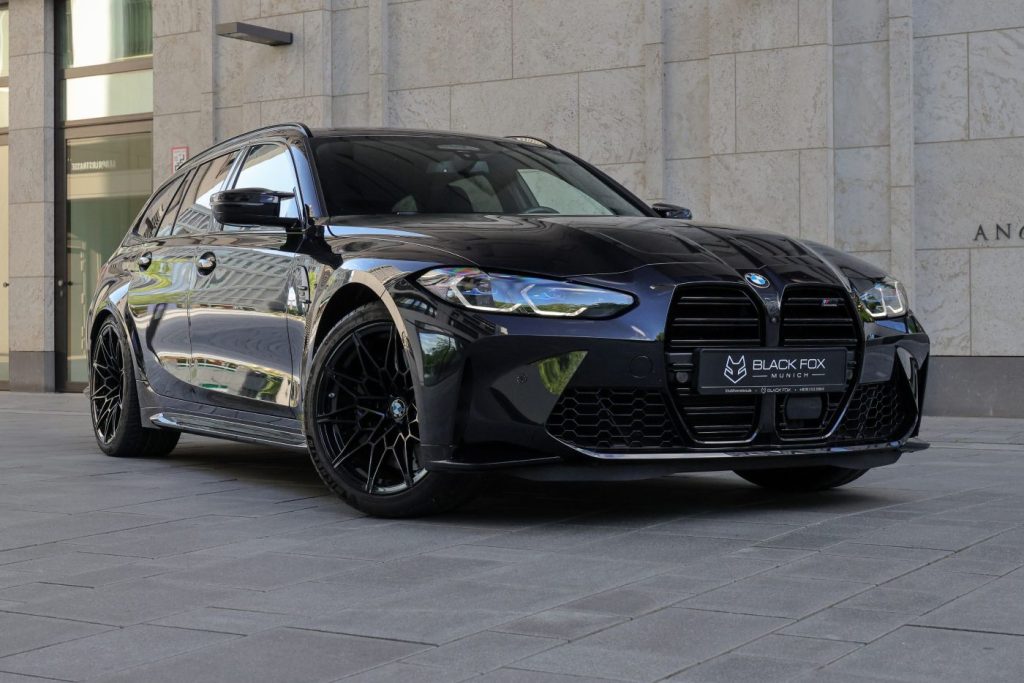
Additionally, the M3 Competition is the only model with BMW’s xDrive all-wheel-drive system, and for 2025, it receives a power boost of 20 horsepower, bringing the total to 523 hp, cutting the 0-60 time to just 3.4 seconds.
As for competitors, those in the M3’s performance range have some great alternatives. Though no longer available for 2025, the Alfa Romeo Giulia Quadrifoglio is a solid choice if you can find one.
Audi’s 2025 RS 5 Sportback offers similar performance with added utility, while the Mercedes-Benz AMG C 63 S E Performance, a plug-in hybrid, delivers strong acceleration numbers.
2. Audi S6 (2023)
The Audi S6 comes equipped with a 2.9-liter twin-turbocharged V6 engine that generates 444 horsepower. Due to its turbocharging and high-compression setup, Audi specifically requires premium fuel for the S6 to maintain performance, fuel efficiency, and to protect the engine under high loads.
The 2025 Audi S6 strikes a balance between luxury and performance, offering a more dynamic experience than the standard A6 but not as aggressive as the RS6 Avant. First introduced in 2020, this generation of the S6 received an updated powertrain in 2023 and subtle aesthetic changes in 2024.
The S6 has long been a staple in Audi’s midsize sedan lineup, and it will continue to play a prominent role as it evolves into the upcoming all-electric S6 E-Tron. The 2025 Audi S6 competes with models like the BMW i5 M60, Mercedes-AMG E53, and Lucid Air.
For 2025, all S6 models now come standard with road sign recognition and garage door opener buttons integrated into the rearview mirror. The 2024 update included a refreshed grille design, along with new paint and wheel options, while 2023 saw engine tuning improvements that enhanced the S6’s sporty feel.
One of the intriguing aspects of the S6 is the contrast between its understated exterior design and its thrilling performance. The midsize sedan has a refined, minimalist look, but its driving dynamics deliver excitement.
The S6’s twin-turbocharged engine, standard air suspension, and upgraded brakes provide plenty of performance for everyday driving.
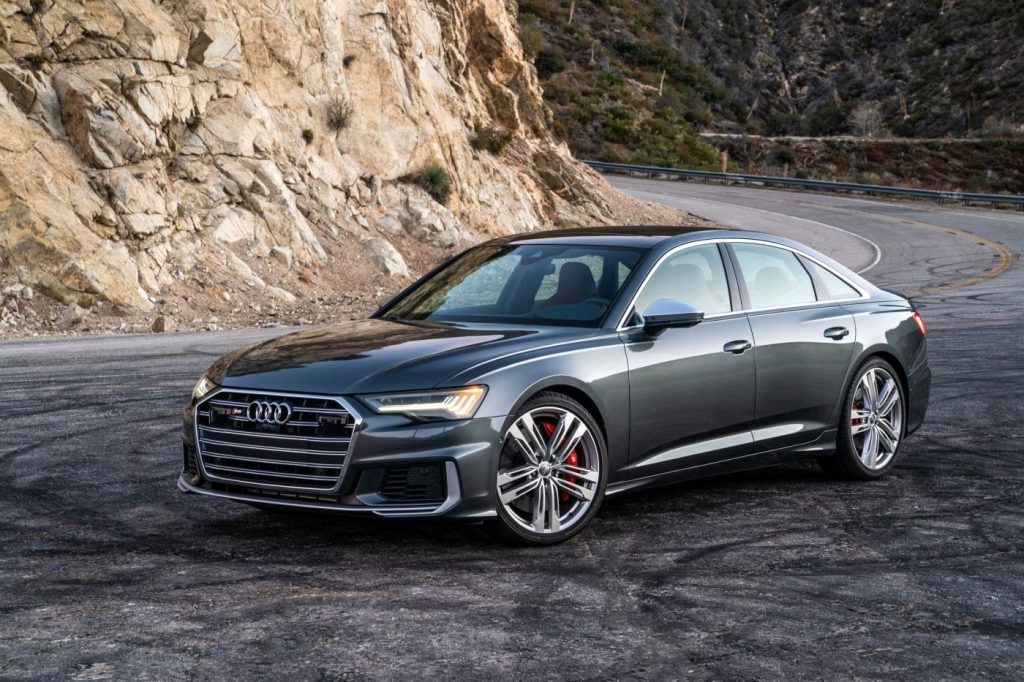
Opting for the sport exhaust system and rear differential makes the driving experience even more engaging. While the S6 is brimming with luxury, with excellent materials and a high standard of quality throughout, Audi’s approach to standard driver assistance features is a bit more conservative compared to some competitors.
Looking to the future, Audi is set to introduce the all-electric S6 E-Tron, which will combine zero-emissions performance with advanced luxury features. Although we’re excited for the upcoming electric model, the 2025 S6 will be fondly remembered for its blend of performance and refinement.
3. Porsche 911 Carrera (2023)
Every model in the 911 Carrera range is engineered for precision performance, using twin-turbo flat-six engines. Porsche requires premium unleaded fuel for all 911 variants to ensure optimal combustion, engine longevity, and to hit the advertised performance numbers.
Porsche’s 3.0-liter engine is an absolute gem. It’s both responsive and torquey, while still rewarding those who push it all the way to its 7,500 rpm redline. This turbocharged setup offers a driving experience that feels as though it has significantly more displacement. The flat-six engine builds power in a natural, smooth manner.
While 388 horsepower might seem only reasonably quick at this price point, the Cabriolet with the Sport Chrono pack can still accelerate from 0 to 62 mph (100 km/h) in 4.1 seconds, as Porsche claims. And knowing the Germans’ conservative approach to performance estimates, that time might even be a bit quicker in real-world conditions.
Turbocharging has done little to dampen the flat-six’s iconic exhaust note. Press the exhaust button, and a deep, muscular bassline adds to the sound, though the 911 never becomes overly loud; after all, it’s a Carrera Cabriolet, not a race car.
While the absence of the seven-speed manual might be lamented by some, Porsche notes that demand for it was low in this segment of the lineup. The eight-speed PDK transmission, however, is one of the best in its class, shifting gears with a speed my less agile fingers could never match.

Even at low speeds, it behaves almost like a manual transmission, requiring careful throttle input. The only downside is that the paddle shifters feel more like basic buttons than traditional paddles.
The dual-clutch transmission is also a huge asset for daily driving, as it upshifts smoothly and quickly on the highway. Porsche claims a combined fuel economy of 21 mpg for both the hardtop and convertible Carreras, with the Cabriolet in Canada experiencing a slight decrease, registering a combined 11.4 L/100 km. This aligns closely with my observations over the course of the week.
4. Mercedes-AMG C63 (2023)
The AMG C63 features a hand-built turbocharged V8 engine producing over 470 horsepower. This engine is fine-tuned for high performance, and Mercedes-AMG requires premium fuel to deliver maximum power and torque. Using regular fuel can severely hinder engine response and long-term reliability.
The all-new Mercedes-AMG C63 S E-Performance, seen here, is arguably the most significant road car to emerge from Mercedes’ performance division in decades.
This is because it marks a pivotal moment where the brand’s electrification strategy, which has been refined in Formula One, finally enters a mainstream performance vehicle. You could think of it as the AMG model designed for the “Drive to Survive” generation.
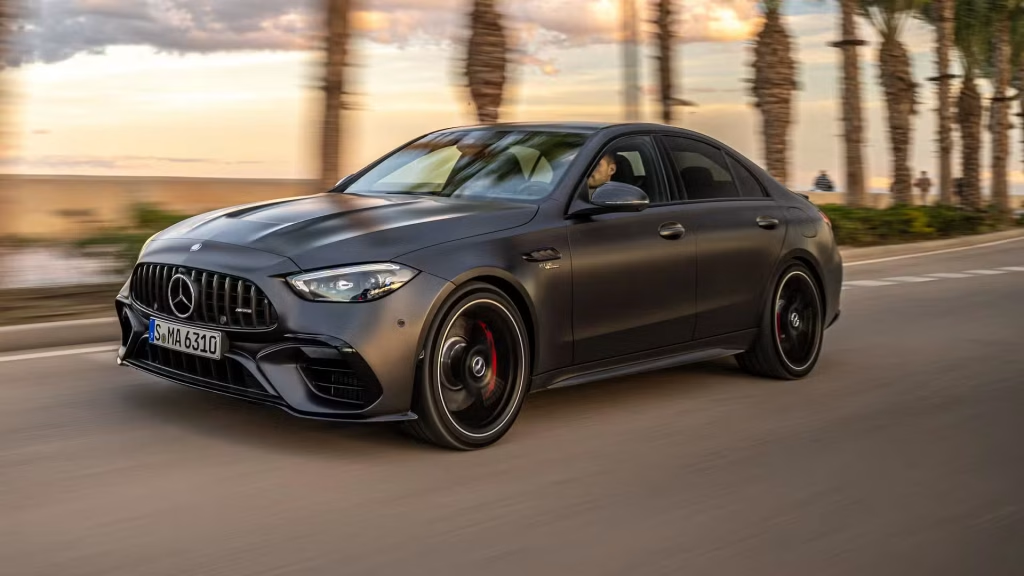
Gone is the familiar setup of a 4.0-litre V8 powering the rear wheels. Instead, the new C63 S E-Performance introduces an all-wheel-drive plug-in hybrid system, which includes a turbocharged 2.0-litre four-cylinder petrol engine paired with a 6.1kWh battery pack. Additionally, rear-wheel steering is part of the package.
This change means the new AMG C63 – available in both estate and saloon versions – is faster and more powerful than its predecessor in every way.
However, Mercedes is taking a bold step here, as the V8 engine has been the hallmark of this super saloon – based on the Mercedes C-Class – for 25 years.
The eight-cylinder engine not only delivered power but also character, which helped distinguish the C63 from its competitors like the Audi RS4 Avant, which has a more subdued V6, and the BMW M3, which, despite its blistering performance, lacks a similarly engaging engine note.
5. Cadillac CT5-V Blackwing (2023)
This supercharged 6.2-liter V8 luxury sedan pumps out 668 horsepower, making it one of the most powerful sedans on the market. Cadillac clearly states that premium fuel is required for the CT5-V Blackwing due to the engine’s extreme output and compression ratio. Anything less would compromise performance and potentially damage the engine.
These vehicles are designed for maximum performance, and using anything other than premium fuel would be a mistake. If you’re shopping in the high-performance or luxury market, always check the fuel requirement—”recommended” and “required” are not the same.
One thing that remains unchanged for 2025 is that the Cadillac CT5-V Blackwing is still an absolute powerhouse on wheels. Its supercharged 6.2-liter V-8 engine churns out 668 horsepower and 659 pound-feet of torque who hand-built this V-8, as forever immortalized on the engine cover.
This immense power is mated to a six-speed manual transmission, channeling power exclusively to the rear wheels, exactly as it was meant to be.
This car launches with incredible force, accelerating from 0 to 60 miles per hour in just 3.6 seconds with the manual (or 3.4 seconds with the automatic), and it continues to a top speed that exceeds 200 miles per hour.
The standard Michelin Pilot Sport 4S tires offer substantial grip, but they still allow for some fun, letting you turn the rear tires into a cloud of smoke when the mood strikes.
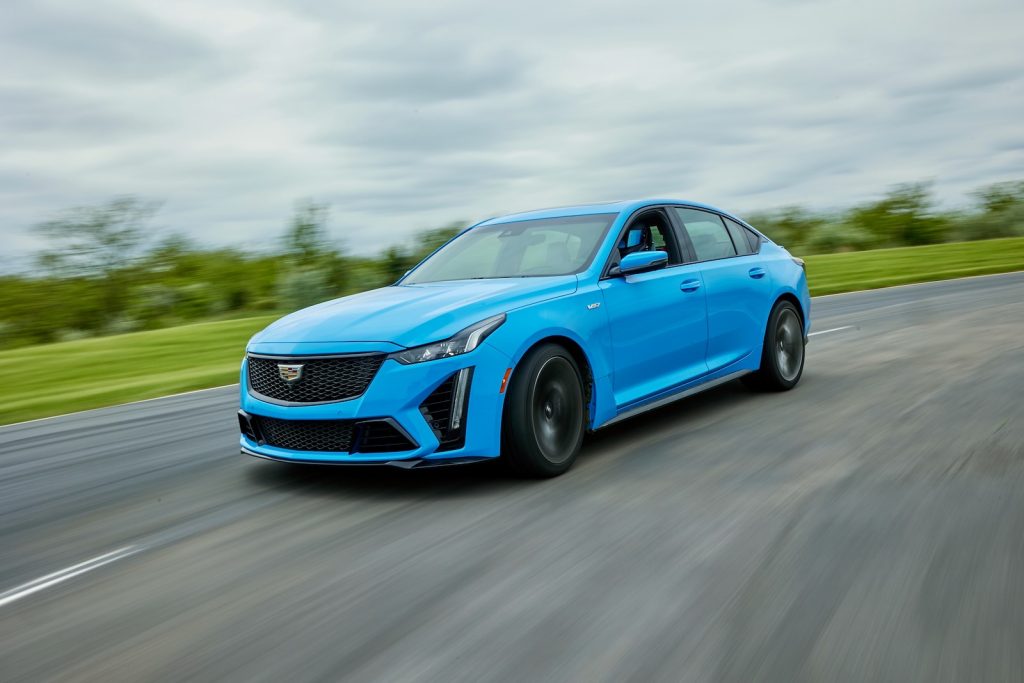
For those seeking even more track-focused performance, the new Precision package offers Michelin Pilot Sport Cup 2 R tires, specifically designed for track use, though our test model didn’t come with that option.
The MagneRide 4.0 dampers continue to impress. The CT5-V Blackwing’s ride maintains an ideal balance between comfort and agility, never harshly jolting you over rough pavement nor feeling unrefined in corners. This car effortlessly takes on tight mountain roads while ensuring a smooth and comfortable journey home afterward.

